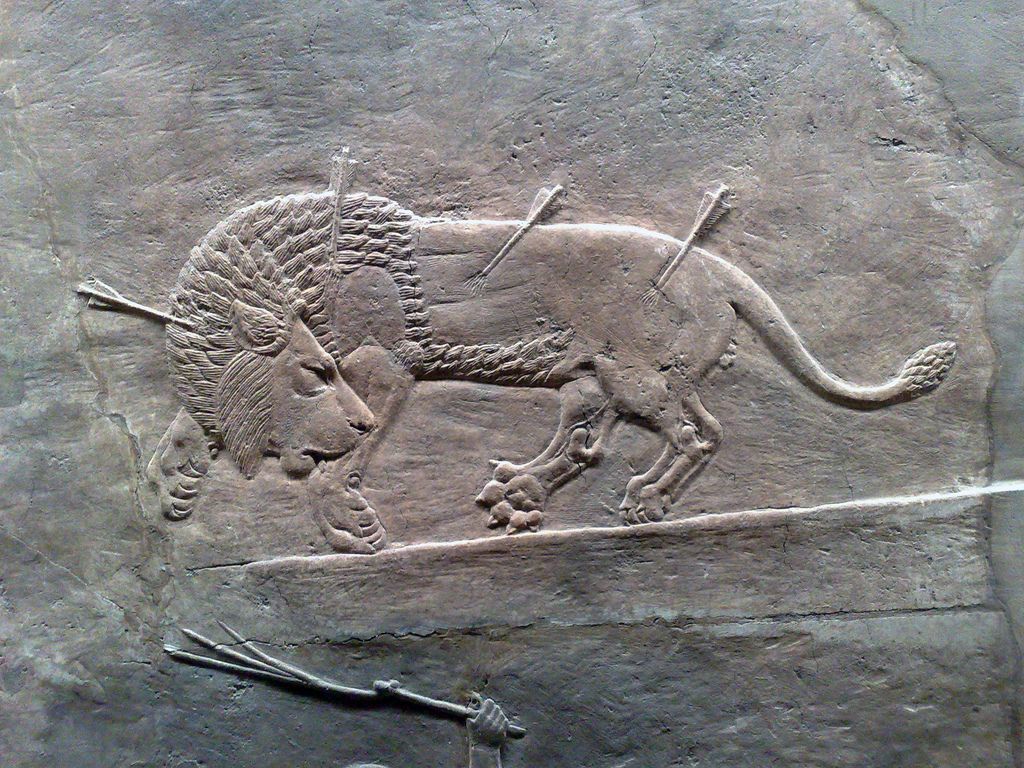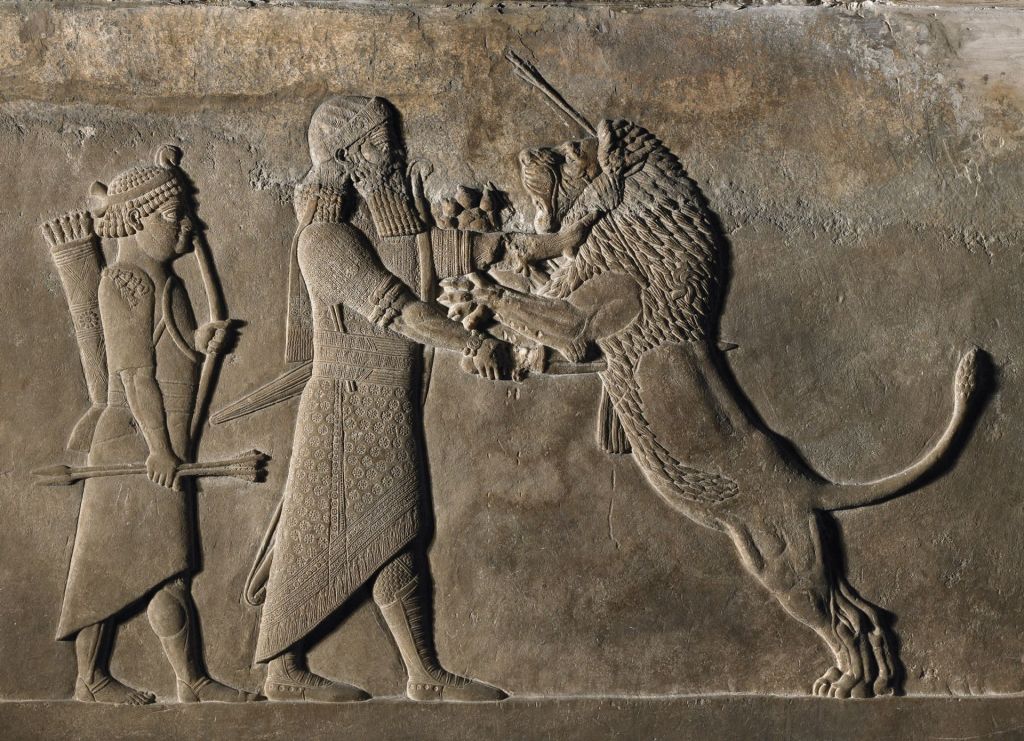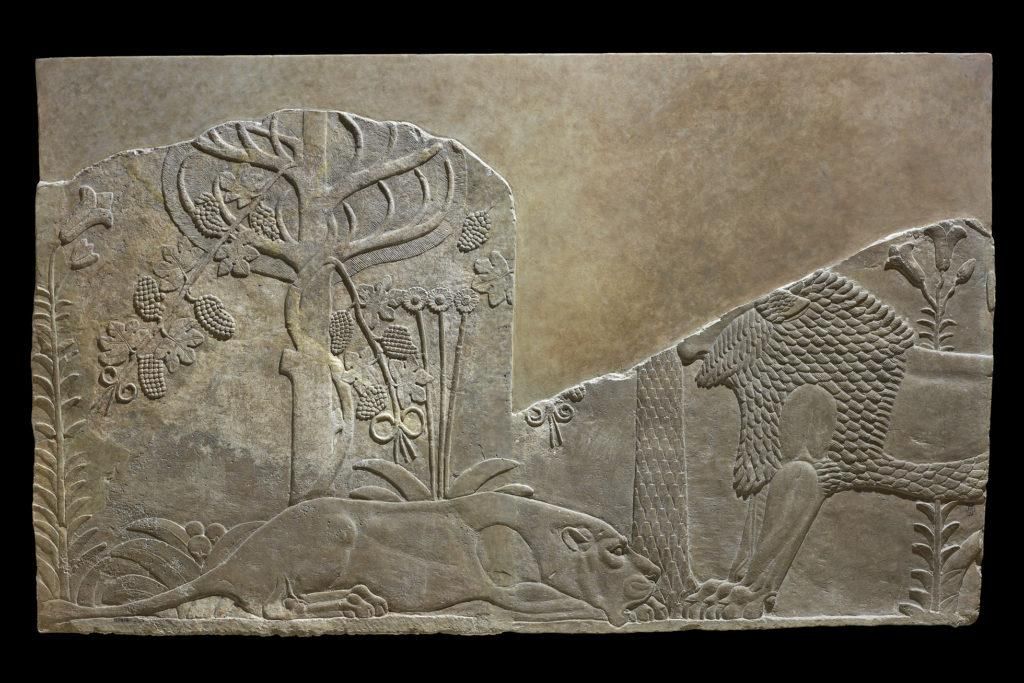February Art: lions
Power corrupts; but it can also command great art, mostly (not always entirely) aligned with its corrupted values.
These carvings from were exhumed in Nineveh, from the Assyrian palace of King Ashburnipal (c.645 BC), a place of gardens and cuneiform libraries but also authoritarian government, their shallow reliefs showing up close the king himself by sword and arrows hunting lions, whose bodies retch or contort in suffering, paws gripping the earth.
Several things here are not quite as they seem. First, other sources suggest that the lions’ threat was no longer existential, indeed like swans and the Queen of England (I’m a bit vague on this) only the reigning monarch or their representatives were allowed to kill them.
Second, in line with this, the carvings clearly show that the smaller Mesopotamian lions are let out from cages for the occasion. Third, in my favourite panel the beautiful individualized foliage behind the lying lioness was probably planted – some scholars think it was Nineveh that had the hanging gardens, not Babylon, where no evidence survives.
In other words, all these scenes are theatre, depicting a ritualized, symbolic act of power and protection, deliberately bringing together (as worthy opponents) lions with royalty (an association that survives), civilization against nature, the king as personal defender of values – in one carving Ashburnipal carries a writing tool in his belt. The lions feel it just the same; it is impossible to know if the naked intimacy with which the carver shows their dying hinted at other kinds of suffering, slavery, and matrydom. But by showing through such visceral details that civilization comes with violence, these images are more honest than some; by describing the nature of power, they have real modern resonance, and not just because they were found across the river Tigris from the modern city of Mosul, decimated during the Iraq war.





